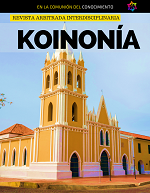Validación in vivo de la Metodología Producción de Gas in vitro en fermentadores Post Gástricos In vivo validation of the in vitro Gas Production Methodology in Post Gastric Fermenters
DOI:
https://doi.org/10.35381/r.k.v6i11.1118Keywords:
Quantitative analysis, animal genetics, animal nutrition. (Words taken from the UNESCO Thesaurus).Abstract
The purpose of the work was to validate the in vitro gas production methodology with in vivo digestibility data in rabbits. Data obtained from in vitro and in vivo tests carried out in the department of animal production of the Polytechnic University of Madrid were used, they were correlated to validate the best times and indices of the modeled curve of in vitro gas production, with the digestibility data in vivo. The highest correlations were obtained between the disappearance of soluble fiber at the ileal level and the volume of gas obtained at 6 hours of fermentation; likewise between the degradation of the neutral detergent fiber in vivo and the volume of gas production from 29 to 96 hours of fermentation. The gas production methodology is a good alternative to study the degradation of fiber, its fractions, in the digestive tract of rabbits.
Downloads
References
Abad-Guamán, R; Carro, M.D; Carabaño, R y García, J. (2015). Estudio de la cinética de producción de gas de la pulpa de remolacha con inóculos ileales y cecales de conejos: Comparación de Modelos [Study of the kinetics of gas production of beet pulp with ileal and cecal inoculums of rabbits: Comparison of Models]. AIDA (2015), XVI Jornadas sobre Producción Animal, Tomo I, 275-277. https://n9.cl/4v32d
Abad-Guamán, R; Carabaño, R; Gómez-Conde, M; García, J. (2015). Effect of type of fiber, site of fermentation, and method of analysis on digestibility of soluble and insoluble fiber in rabbits. Journal of Animal Science, (93), 6, 2860–2871. https://doi.org/10.2527/jas.2014-8767
De Blas C. & Wiseman J. (2010). The Nutrition of the Rabbit. Cab International. 2nd Eition. Recuperado de https://n9.cl/59lfk
Dihigo L. (2005). Avance en los estudios de fisiología digestiva del conejo en Cuba con el uso de fuentes de alimentos no tradicionales: Consideraciones Fisiológicas [Advances in rabbit digestive physiology studies in Cuba with the use of non-traditional food sources: Physiological Considerations]. Recuperado de https://n9.cl/lhkiv
García, J., Carabaño, R., & de Blas, J. C. (1999). Effect of fiber source on cell wall digestibility and rate of passage in rabbits. Journal of animal science, 77(4), 898–905. https://doi.org/10.2527/1999.774898x
Gidenne, T., V. Pinheiro, y L. Falcão E Cunha (2000). A Comprehensive Approach of the Rabbit Digestion: Consequences of a reduction in dietary fibre supply. Recuperado en noviembre de 2020, de https://www.researchgate.net/publication/222694474
Gómez-Conde, M. S., García, J., Chamorro, S., Eiras, P., Rebollar, P. G., Pérez de Rozas, A., Badiola, I., de Blas, C., & Carabaño, R. (2007). Neutral detergent-soluble fiber improves gut barrier function in twenty-five-day-old weaned rabbits. Journal of animal science, 85(12), 3313–3321. https://doi.org/10.2527/jas.2006-777
Kwakkel, R. P., Williams, B. A., & van der Poel, A. F. B. (1997). Effects of fine- and coarse particle diets on gizzard growth and fermentation characteristics of the caecal contents in broiler chickens. In Proc. 11th European Symp. on Poultry Nutrition (WPSA), Faaborg, Denmark, 24-28 August (pp. 249-251).
Marounek, M., S. Vovk, & V. Benda. (1997). Fermentation patterns in rabbit caecal cultures supplied with plant polysaccharides and lactate. Acta Veterinaria Brno 66: 9-13. https://doi.org/10.2754/avb199766010009
Menke, K., Raab, L., Salewski, A., Steingass, H., Fritz, D., & Schneider, W. (1979). The estimation of the digestibility and metabolizable energy content of ruminant feedingstuffs from the gas production when they are incubated with rumen liquor in vitro. The Journal of Agricultural Science, 93(1), 217-222. https://doi.org/10.1017/S0021859600086305
Tilley J M A & Terry R A. (1963). A two-stage technique for the in vitro digestion of forage crops. J. Brit. Grassland Soc. 18:104-11.
Wilfart, Y. Jaguelin-Peyraud, H. Simmins, J. Noblet, Jaap van Milgen, et al. (2008). Kinetics of enzymatic digestion of feeds as estimated by a stepwise in vitro method. Animal Feed Science and Technology, Elsevier Masson, 141 (1-2), 171-183.
Wiliams, B. A. (2000). Cumulative gas production techniques for forage evaluation. In D. I. Givens, E. Owen, R. F. E. Axford, & H. M. Omed (Eds.), Forage Evaluation in Ruminant Nutrition (pp. 189-213). CABI Publishing Wallingford. https://doi.org/10.1079/9780851993447.01
Published
How to Cite
Issue
Section
License
CC BY-NC-SA : Esta licencia permite a los reutilizadores distribuir, remezclar, adaptar y construir sobre el material en cualquier medio o formato solo con fines no comerciales, y solo siempre y cuando se dé la atribución al creador. Si remezcla, adapta o construye sobre el material, debe licenciar el material modificado bajo términos idénticos.
OAI-PMH URL: https://fundacionkoinonia.com.ve/ojs/index.php/revistakoinonia/oai.









